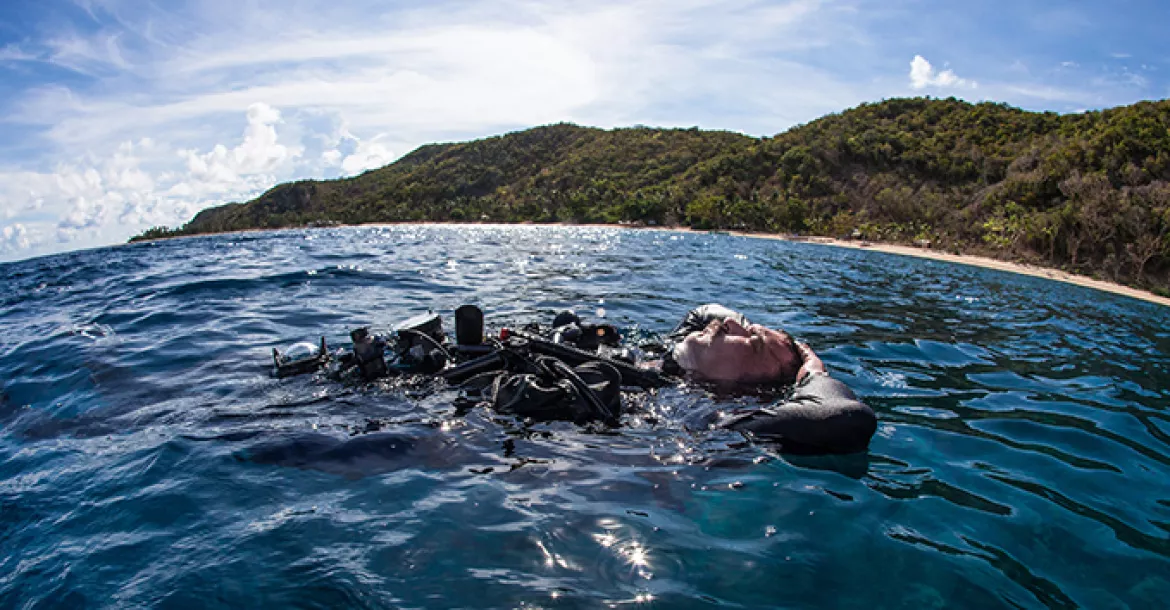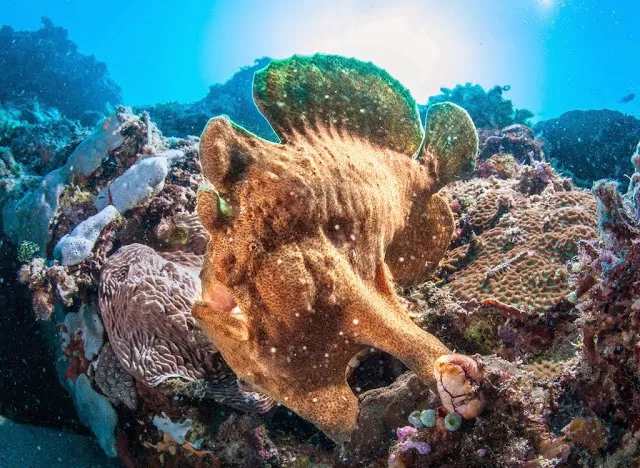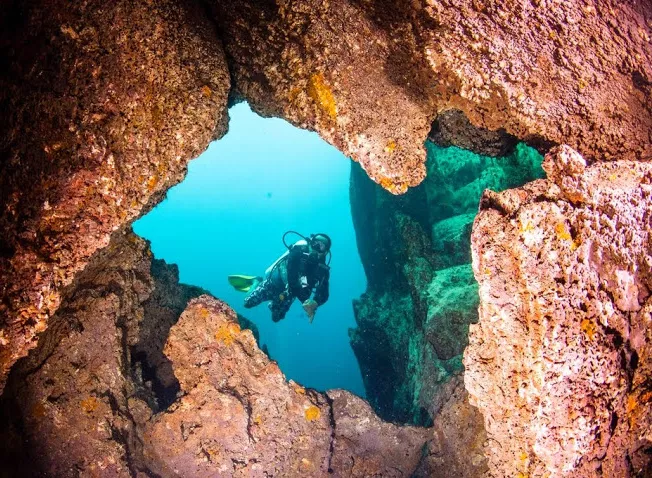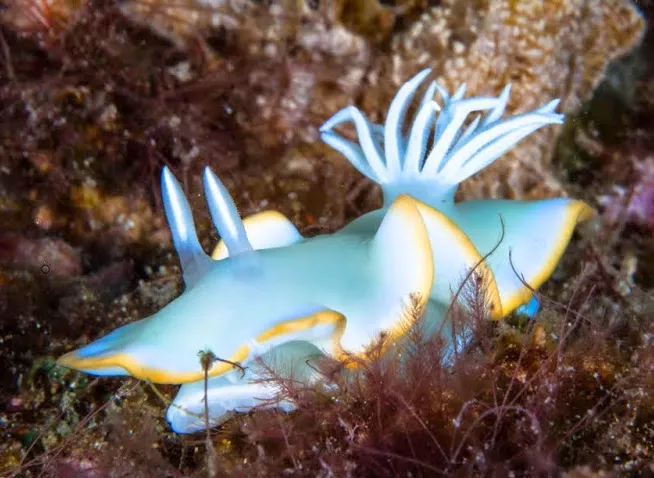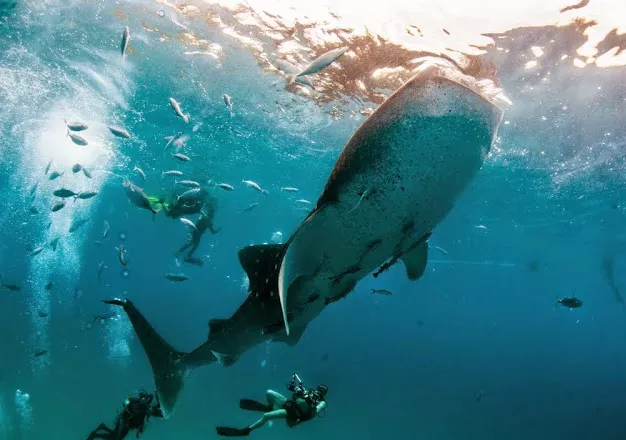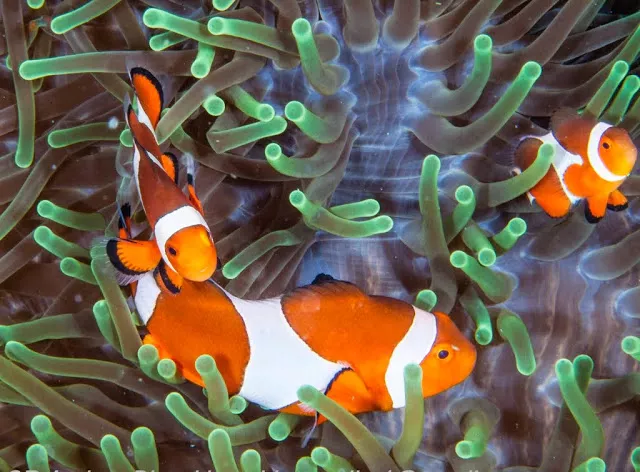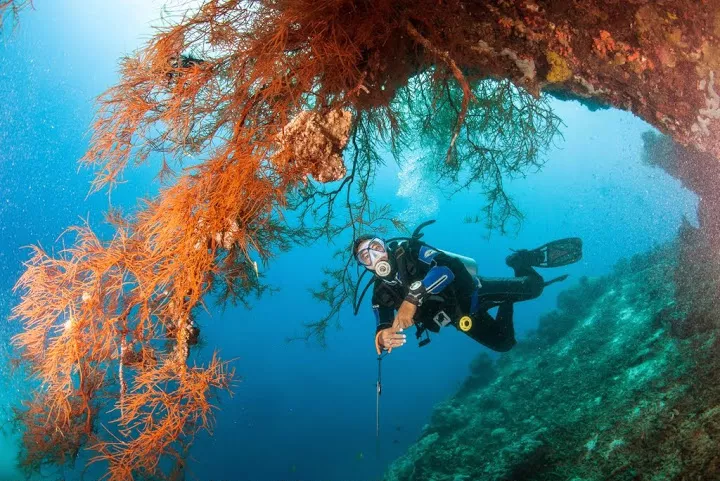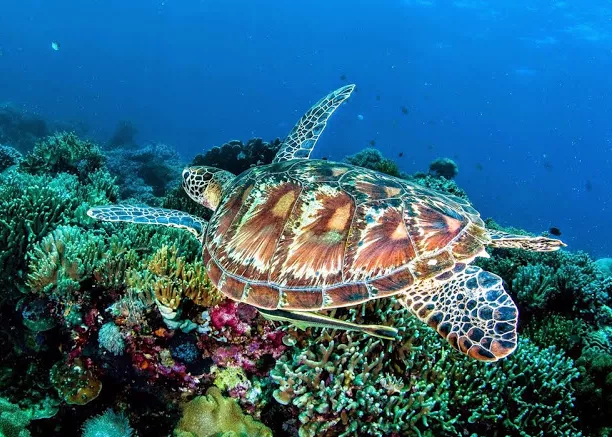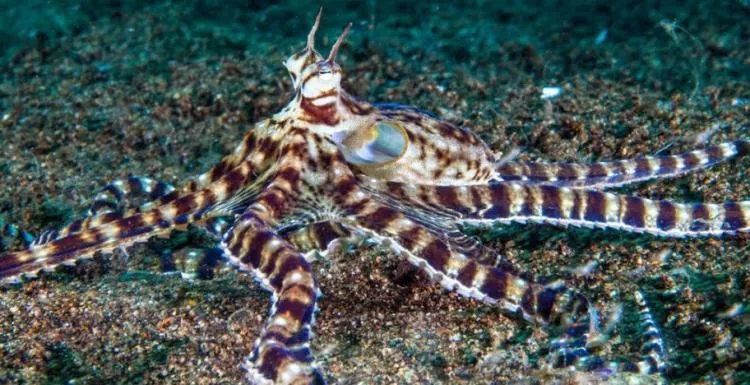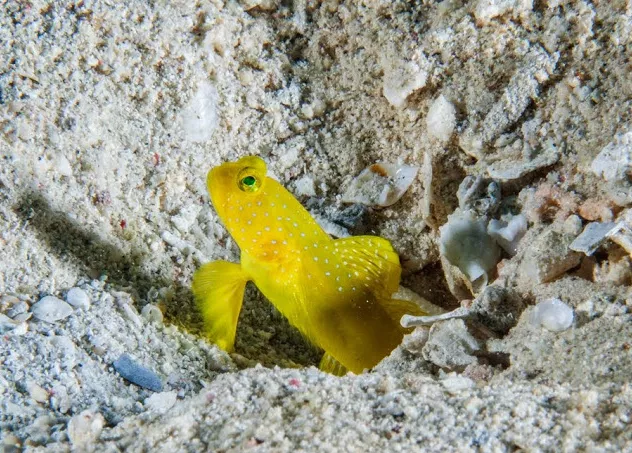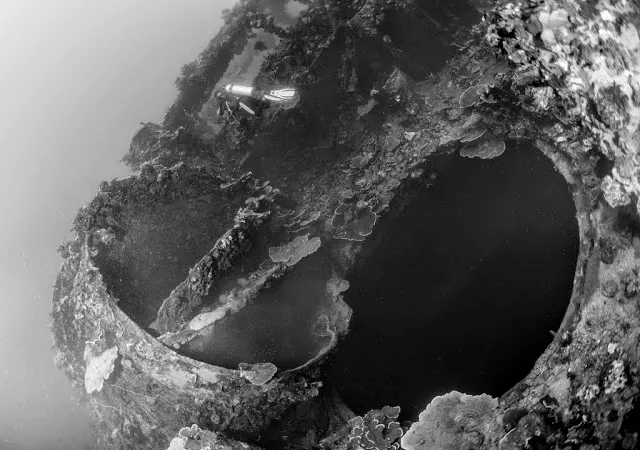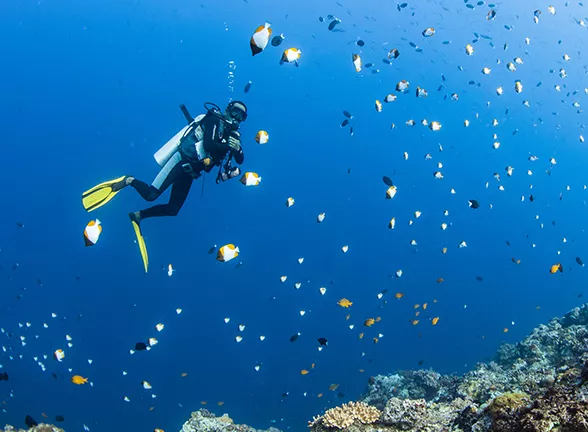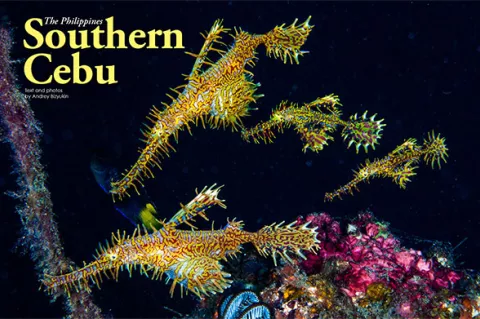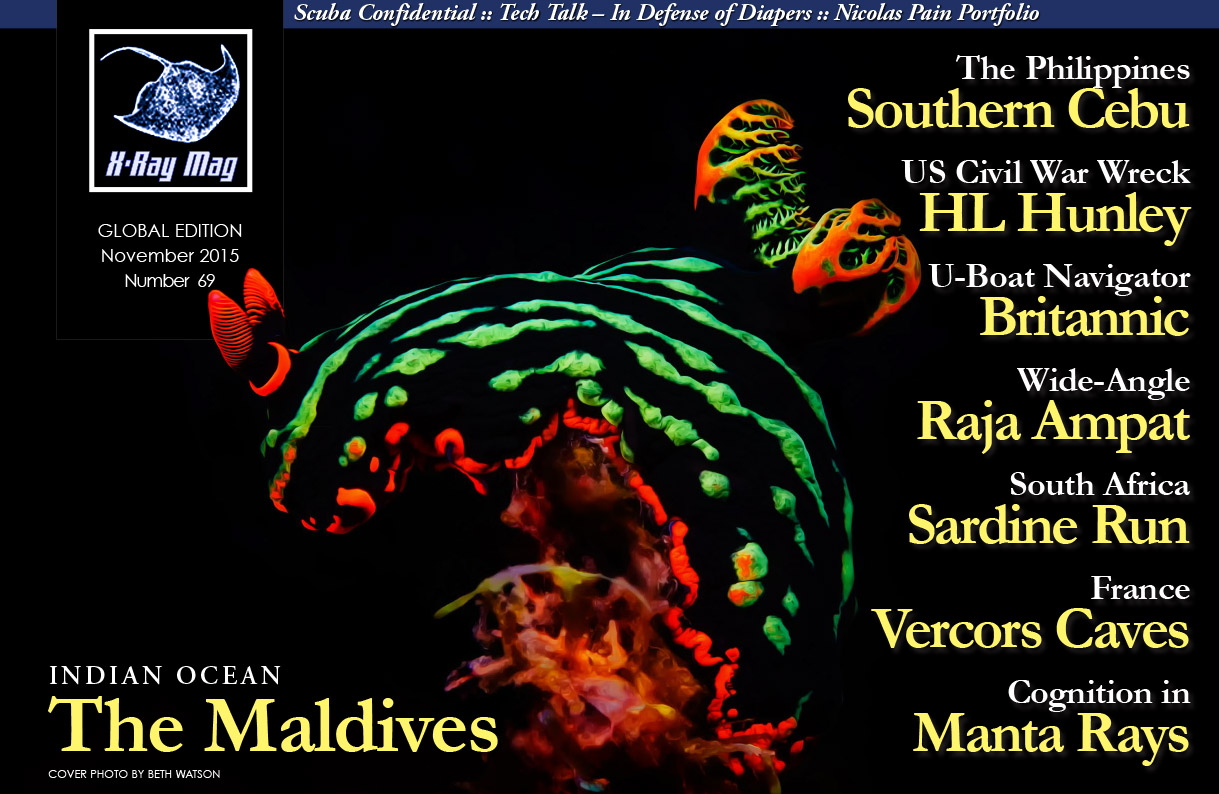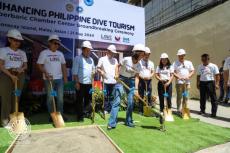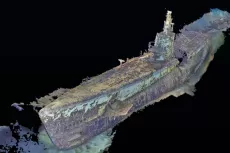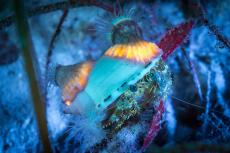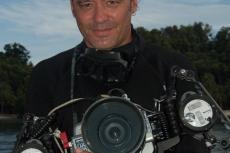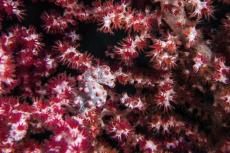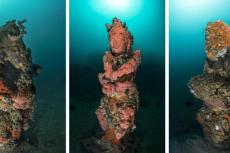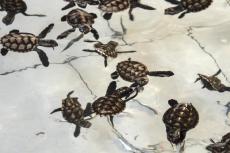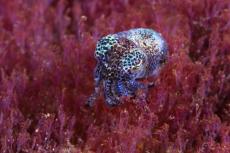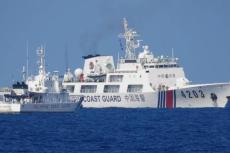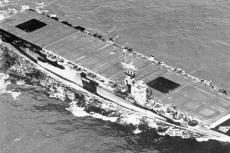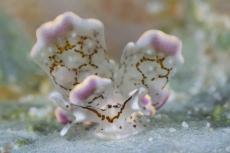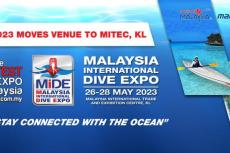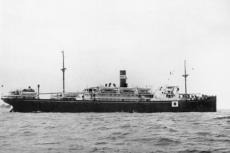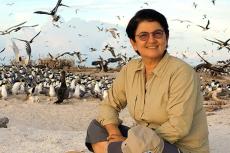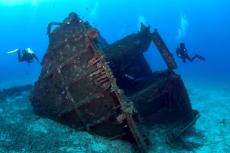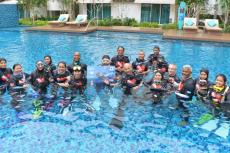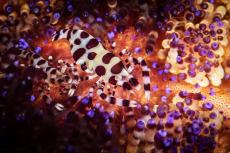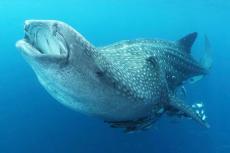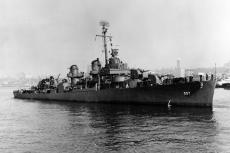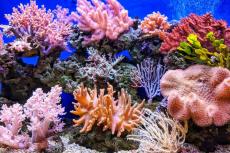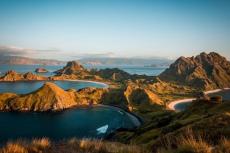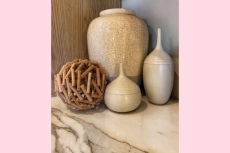Cebu Island is one of over seven thousand islands located in the Philippines. It may be best known as the place where the early 16th century Portuguese explorer Ferdinand Magellan met his unfortunate end. There is a 20-meter tall monument at Punta Engaño on Cebu erected in honor of the native chieftan, Lapu Lapu, who in the 1521 Battle of Mactan, proved victorious over Spanish forces led by Magellan. Among divers, though, Cebu is more commonly known for its wide variety of dive sites.
Contributed by
Our party of divers departing from Moscow got discount tickets and authorization for additional luggage for dive gear, plus an extra 10kg per person, after just showing our driver’s licenses to Cathay Pacific Airlines. It is a very pleasant airline with which to travel, especially when one flies to the other end of the world – to the Philippines – where our party planned to dive at the southern end of Cebu Island. Nine hours took us to Hong Kong, and it was two-and-a-half hours before we landed in Cebu International Airport. It was a peaceful flight in a large and comfortable Boeing airplane.
From the airport in Cebu, we travelled to the very southern tip of the island, to a dive center and resort called Easy Diving. It took four-and-a-half hours racing through the narrow roads of the island to get there. Every minute was a hair-raising thrill-ride in a self-assembled microcar, quite an original and unique mode of public transportation. We finally arrived at a paradise awaiting us on a rocky shore leading to a turquoise-colored sea.
Raphael Virchaux, the owner of the dive center, came to meet us in person. He is a PADI Course Director, technical diver, and a big fan of diving in Cebu—a man with a passion for the Philippines. Virchaux was born in Antibes in southern France, where the World Festival of Underwater Images was initially established (continuing now in Marseille). Apparently, the Cap d’Antibes on the peninsula of Antibes has a magical place in the history of diving and is a center for international diving culture.
Originally from Switzerland, Virchaux decided to trade the snowy peaks and mountain lakes of his homeland for the wonderful climate, warm seas, magical sunrises and sunsets of the Philippine Sea, so similar to the French Riviera. After finishing medical school, he decided to become a diver. Twelve years ago, he came to the Philippines, and built the dive resort, Easy Diving. The site of the resort was not chosen by chance. It sits on a picturesque rocky terrace above the sea, with a romantic view of the ocean strait, bordered by the peaceful, soothing, distant misty mountains of a neighboring island. Indeed, in his home garden filled with fruit trees, he has built a pool with Roman-style columns, which fits well in such an idyllic landscape.
It was so good to relax in the evening after a hot day of diving and swim in the cool outdoor pool, enjoying fresh mango juice and sunset views over the bay, dreaming about the next Philippine adventure. It was a real stroke of diver’s luck to find this resort comprised of five comfortable bungalos with two rooms each, marble floors, wide personal balconies and all the amenities Western travellers have come to expect.
The cuisine at the resort varied in selection, with meals to impress even the most discerning gourmet palettes. There was a huge selection of drinks at the bar, which was staffed with helpful, ever-courteous, smiling staff, ready to fulfill customers’ wishes.
In addition, it was exactly here where the resort sits in a strait between the islands of Cebu and Negros, where the sea was most calm and quiet, having the lowest chance of hurricanes. There was a charming house reef and quick access to seven well-known dive sites, allowing divers to dive here all year round. Virchaux had a sufficient amount of rental equipment, so if one has a strong desire to avoid extra luggage fees on airlines, one could easily rent dive equipment at the resort. That is Easy Diving—a small, cozy resort, with a solid four stars, serving a maximum of 20 divers.
The house reef
The dive center is just a two-minute walk from the hotel and the seashore. I did not even have to touch my equipment there, because the dive center staff—branded in Easy Diving t-shirts—were so efficient, promptly loading all our dive equipment onto the dive boat. The boat was called a ”banka”—a spacious, comfortable trimaran that was very stable on the waves.
The dive boat moored very close to the hotel and we were ready to go diving only ten minutes later. Our dive guides looked very experienced. There was a typical Philippines briefing before the dive—very relaxed, nearly Russian in style. With no austere regulations, no discussion of possible problems, the dive guide shook his head, and told us not to forget to control the air flow rate on the pressure gauge. That was it. At first, I was a little surprised by the relaxed approach, but later I realized that it came naturally, taking into account the innate characteristics of the Philippine Sea.
We got in the water and followed the guides. The underwater slope of the island that gently descended into the depths was overgrown with corals. The water temperature was 29°C and visibility was about 10m, which was considered a bit low for this area, but as a site for macro photography, we were satisfied. A local guide pointed out to us a frogfish, blue and yellow dwarf moray eels, sea anemones with “Nemo”-like clownfish, starfish, worms and nudibranchs. There was no current and the maximum depth of the dive did not exceed 20m, so we were happy to spend time taking photographs of the tiny creatures and the diverse inhabitants of the Philippine Sea. For the underwater photographer, especially macro enthusiasts, the two dives in the house reef at Easy Diving flew by very quickly. There was plenty to see and to photograph.
Whale sharks at Oslob
A traditional highlight of the south of Cebu Island is diving with whale sharks. Diving with these gentle giants is organized very professionally, but a bit like a circus attraction. Sailing to Oslob town took about an hour-and-a-half on our banka (dive boat). At the location, there was a feeding station for the whale sharks. The site bordered the seashore and was cordoned off by a rope with buoys. Inside this area, in small boats, were floating station employees – the breadwinners of shark diving. They fed shrimp to the whale sharks. This feeding practice has gotten these marine giants so well house-trained that they intently followed the boats and constantly opened up their mouths for the tourists, waiting to feast on the next portion of the goodies.
Our party went ashore to buy tickets and permission to dive with the whale sharks. We listened to instructions given during the ten-minute briefing concerning safety and the specific behaviors of these huge animals. After the meeting, two specially certified local diveguides followed us into the water just inside a fenced area and gave us the opportunity to spend about 30 minutes taking pictures of the giant sharks. Officially, we were not permitted to approach the sharks closer than four meters. We were also not allowed to use flash, torches or lights that might scare the animals.
On this day, six to eight huge whale sharks were feeding in this little area of the sea surrounded by small floating boats and an audience of about 50 people at the surface wearing masks and snorkels as well as around 20 divers with cameras, vigorously scouring the water, hoping to capture another underwater masterpiece in pixels. The water around us was literally seething with bubbles, fins and sharks flying past, with huge mouthfuls of shrimp. At first, photographic passions ran high—everyone tried as much as possible to get close to a shark, without breaking the rules of diving. After 45 minutes, I took my finger off the shutter of my camera and realized suddenly that I could watch these whale sharks scurrying in front of me, behind me, to the side, above and below me. It truly was a whale shark underwater circus here, in the south of Cebu.
Sumilon Island
Sumilon Island is located in a protected marine area a few miles from the dive resort. Here, one can find dense coral gardens on a reef plateau at eight to 10m depths, vertical rock walls with large coral fans, lots of fish, large sponges and countless underwater caves and grottos. Divers can do a couple of dives per day, traveling along the rock walls in different parts of the island, depending on the time of day and direction of tidal currents.
We started the dive from a shallow reef slope, with water temperature at 30°C, then slid down to a rocky drop-off and maneuvered into a depth of 30m, drifting in the weak current and looking for interesting marine life. It seemed that our diveguides were asleep, or lazy, just swimming next to us like rice-gorged, relaxed islanders. Such an approach was clearly not alright with me. I signalled one of them over, requiring his attention and the pointing out of new subjects. He seemed shaken and showed me an interesting coral fan, surrounded by lovely yellow fish. I used it as a model, taking pictures and immediately afterwards, on the viewscreen of the camera, I showed him the image that was captured. He loved it! He seemed to wake up and was transformed instantly! Now he was an underwater hound, rushing in all directions, scanning the slope in search of new subjects. Such is the power of art! No longer just a staff member going along for the ride, the dive guide became an avid accomplice in the process of capturing compelling underwater images.
There were also caves that were interesting—places where big fish hid—and at times, it seemed that from the caves’ deep shadows, the voices of pirate treasure seekers could be heard. So I never deny myself the pleasure of inspecting every interesting underwater cave I find. We photographed the coral, scattering fish, and explored all the caves.
Our dive boat drifted with us, down with the current. When a we reached a wall of the reef skirting the island, and swam off to the right, a strong current took us away from the reef. We fought the current to no avail. The 5m safety stop would have to be taken in the water column, rapidly carrying us away to a wide strait between the islands of Cebu and Sumilon. It’s times like these when it’s very handy to send up a surface marker buoy during the decompression stop, which allowed the dive boat to find us and come pick us up out of the strong current.
Apo Island
Apo Island is a small island known for its clear waters, brilliant corals and sea turtles. To get there, we had to spend three-and-a-half hours in a continuous race on the sea, along the southern coast of the island of Negros and beyond. We went out on the sea at the rising of the sun in order to have the opportunity and time to do it at least three dives. Breakfast and lunch boxes came along with us for the long sea voyage. During the long journey to the dive site, I sat down next to our diveguides and had a confidential, friendly talk “about life.” I told them about Russia, and I listened to them talk about the Philippines. For the photographer, it is always important to be in close contact with and gain the trust of the locals. Only then do they happily disclose the underwater treasures only the locals know about, and they begin to show you the true beauty and value of the nature of the Philippines. And this offers a real chance to make good pictures.
Apo Island is located in a protected area, so we again had to pay for permission to go diving in the area to see the underwater world of the island. The dive started on a shallow coral reef lit by bright Philippine sunshine. There were literally volumes of marine life and healthy corals to delight the eye. Here, one could find vibrant and interesting coral life, fish that did not scare easy, gobies, scorpionfish, striped poisonous sea snakes, huge well-fed nudibranchs, and shrimp. It was here that one of the best locations for diving with and photographing large sea turtles could be found. We did the first two dives of the day here, observing sea turtles and exploring sea caves. Then we took an excursion to the beach, to get acquainted with the local flavor of the island. There seemed to be more than 200 residents living on the island. The third dive was planned for the western part of the island, at a depth of about 20m on a sandy bottom out to an area with hot volcanic bubbles, which was like an underwater whirlpool—evidence of the ancient volcanic origins of Apo Island.
Apo Island is a unique place. I strongly recommend this dive site for divers of different levels of training and, of course, every underwater photographer going to the Philippines. A strong headwind stretched out the duration of our trip back to the dive center—to four hours—so it was quite dark by the time we got back to the resort.
Dauin
On the morning of our last day in our far-too-short stay on Cebu, we were invited to go to the legendary dive site of Dauin. It is the place where countless photographs, which grace the covers of leading dive magazines around the world, were taken. Dauin is one of the best dive sites for underwater macro photography, located on the coast of Negros Island.
On first impression, it is quite an unremarkable stretch of sea. The beach town of Dauin is encircled by a rope with buoys. Our dive boat was moored near these buoys. We, of course, had to pay for permission to dive here. We went down under the water, where visibility was 25m and water temperature was 30°C. We settled on the sandy bottom, and then swam along a slope to a depth of 20 to 25m. At first glance, I thought: “What is there to see? Just a sandy bottom?” But when our diveguides drew our attention and began to show with their pointers the tiny, absolutely fantastic miniature creatures seeming to come from another parallel world to our own—thriving, running and jumping on this magical sand—we understood that we had hit the jackpot on the Klondike. And here began a photographic Rock ’n’ Roll of creatures such as a green crab, which looks like a leaf with legs; fish with a flag or a horn on the nose; colorful pipefish; shrimp; gobies and more.
Two dives here flew by in one breath, it seemed, and my finger was constantly on the trigger of the camera. The emotion, enthusiasm and nitrogen saturation signal on my dive computer went through the roof. Dauin is internationally recognized as a macro classic. However, the time quickly approached when we had to stop diving. It was time to return topside, because tomorrow we had to catch a plane.
Waterfall of Cebu
While our dive gear was drying, we ordered a taxi to go see the nearby waterfalls and enjoy the local natural (not only underwater) attractions of southern Cebu. In only a quick half-hour drive, we found ourselves at a local freshwater resort. Adults and children came here to this shady valley to enjoy a refreshing, cool swim and be invigorated by the energy of the falling waters, cascading from a great height. Waterfalls have always attracted people. There is something about them that embodies spirituality and magic. For us, it was an escape from the Philippine heat and it seemed that one could enjoy watching the water falling from the cliffs endlessly.
Raphael Virchaux told us that Easy Diving resort initially focused on German and European divers. However, after the international economic crisis struck, Europeans were travelling much less, and the resorts main guests were divers of various nationalities, including more and more of our Russian compatriots. “How do you like Russian divers?” I asked Virchaux. “I like their enthusiasm for the underwater world, their friendly spirit and traditions of behavior, which are similar to Philippinos,” he said. “They love to laugh, like a friendly hug and kiss. They seem like very positive people and are good divers.”
Five days of diving in the south of Cebu passed in an instant. I have fond memories from the trip as well as uniquely bright colorful pictures, celebrating the Philippine sun and turquoise sea. The people are friendly and open, always smiling, and I cherished the opportunity to enjoy and photograph the unique wonders of the underwater world of the Philippines. ■
SOURCES:
https://en.wikipedia.org/wiki/Ferdinand_Magellan
https://en.wikipedia.org/wiki/Lapu-Lapu_Shrine
https://en.wikipedia.org/wiki/Battle_of_Mactan
Published in
-
X-Ray Mag #69
- Läs mer om X-Ray Mag #69
- Log in to post comments

